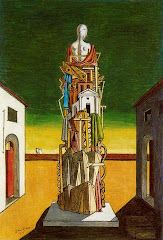Uma viagem no Barroco - 19 - Jean Philippe Rameau-Tristes Apprets Pales Flambeaux (1683-1764)
Jean Philippe Rameau-Tristes Apprets Pales Flambeaux
 French composer of the 18th century, and a highly influential music theorist. Born in Dijon, where his father was an organist, Rameau traveled to Italy at the age of 18 and subsequently was employed as an organist in several French cities, most notably Clermont-Ferrand, where he stayed until 1722 and where he wrote his Traité de l'harmonie (Treatise on Harmony, 1722). He moved to Paris in 1723, where he taught harpsichord and music theory. His early compositions include light theatrical pieces and religious and harpsichord music. In 1731 he became director of the private orchestra of a wealthy music patron. This patronage enabled him to turn to opera. Rameau's 30 or so operas include many masterpieces of the French lyric theater: the tragedies Hippolyte et Aricie (Hippolytus and Aricia, 1733), Castor et Pollux (Castor and Pollux, 1737), Dardanus (1739 and 1744 versions), and Zoroastre (1749); the opéra-ballets Les Indes galantes (The Gallant Indies, 1735), Les fêtes d'Hébé (The Festivals of Hebe, 1739), and La princesse de Navarre (1745); and the comedy Platée (1745). His orchestration was powerful and innovative, as was the manner in which he used harmony for dramatic effect.
French composer of the 18th century, and a highly influential music theorist. Born in Dijon, where his father was an organist, Rameau traveled to Italy at the age of 18 and subsequently was employed as an organist in several French cities, most notably Clermont-Ferrand, where he stayed until 1722 and where he wrote his Traité de l'harmonie (Treatise on Harmony, 1722). He moved to Paris in 1723, where he taught harpsichord and music theory. His early compositions include light theatrical pieces and religious and harpsichord music. In 1731 he became director of the private orchestra of a wealthy music patron. This patronage enabled him to turn to opera. Rameau's 30 or so operas include many masterpieces of the French lyric theater: the tragedies Hippolyte et Aricie (Hippolytus and Aricia, 1733), Castor et Pollux (Castor and Pollux, 1737), Dardanus (1739 and 1744 versions), and Zoroastre (1749); the opéra-ballets Les Indes galantes (The Gallant Indies, 1735), Les fêtes d'Hébé (The Festivals of Hebe, 1739), and La princesse de Navarre (1745); and the comedy Platée (1745). His orchestration was powerful and innovative, as was the manner in which he used harmony for dramatic effect.His Piéces de clavecin en concerts (Concerted Music for Harpsichord, 1741), for two violins and harpsichord, are among the earliest such works to give the keyboard an independent, rather than accompanying part. His theoretical writing set in systematic form the harmonic practices of the previous 100 years and detailed theoretical concepts that remained basic to European harmony until about 1900. Rameau died in Paris, September 12, 1764. [baroque-music.com; cf wikipedia]


Sem comentários:
Enviar um comentário